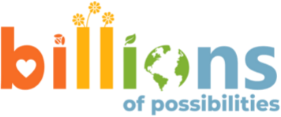Read This. Seven Problems with Problems.
“Problem definition” sounds like a straightforward exercise in logic, yet this activity is particularly vulnerable to inequity. In design work we often decontextualize problems, distancing ourselves from them and obfuscating their origins. This is a form of invisible violence: at its best it ignores the impact of problems on real people and at its worst it blames people for the sins of systems. In this way, equitable problem-definition is a form of truth-telling and when we tell the truth about the whys of things we take our power back, taking our first steps on the path towards collective liberation.
Sometimes we do a great job of solving the wrong problem. Sometimes we build things that don’t solve problems at all, or, even more frustrating, make the problem worse. To make matters more complicated, the most pressing social issues of today ask us to solve problems where there is no one solution, where more data and information don’t necessarily make things more clear, and when the problems themselves are hard to even define.
Problem-definition is oftentimes overlooked or hurried in favor of (prematurely) implementing solutions. But solving a problem starts with intimately understanding the true root cause of the problem at hand…and, importantly, the context the problem lives within, the history that underlies it, and the people it affects. Equitable Problem Definition requires us to fully contextualize problems, naming clearly their origins, their manifestations in systems, institutions, and ideologies, and identifying the people that benefit from and perpetuate them, often calling us to implicate ourselves in this process.
The way we go about defining (or not) the problems we are working on is an opportunity for an intentionally equity-centered approach. Quite notably, it’s the first step to creating an effective solution. Systems-level equity-related problems are at their core people-problems, but they are situated in a context that is often neither visible nor well understood. In this way, problem-definition is itself a powerful agent of equity, but learning how to do it well takes time and practice.
Equity Meets Design has developed a framework to help us use problem definition as a tool for equity. We have distilled what we believe are powerful insights about the common ways the process of defining problems and the definitions themselves can amplify oppression – what we call the 7 Problems with Problems.
There are seven common “Problems with Problems”:
- The problem you’re naming is just the absence of the solution you want to build or the outcome you want to see in the world.
- You’re talking about the problem without talking about any people — including the people being affected by it, creating it, benefiting from it, or perpetuating it.
- The problem explicitly or implicitly blames those who are affected by it for its existence. It’s framed as a shortcoming or lack of effort on the part of the people who are experiencing it.
- The problem named is actually just a symptom of a deeper and more pervasive problem, but is talked about as though it’s the ultimate root cause.
- The problem is described as being a solely or mostly interpersonal one, without reference to institutional, systemic, or ideological factors.
- The problem is described without any reference to the history of how it came to be.
- We try to solve the problem for everyone and end up solving it for no one or try to solve all the problems at once and end up solving none of them.
By the conclusion of this first module, you will have had the opportunity to draft your problem statement, complete a self-assessment, and assess the extent to which your team is on the same page about your problem. We will be here to support you in your explorations on this topic. You may determine that with a few refinements you are ready to proceed, or you may determine that this warrants a deeper dive with your team and take Equity Meets Design’s full Problem with Problems course online.
Either way, please know that equitable problem definition is a skill that can be learned and practiced, and it is absolutely critical to the process of equitable design.

Task #1: Draft a Problem Statement.

Before watching this video, please take a few minutes to write a draft problem statement and share it in a google doc with your colleagues for collaboration and refinement through this module. By problem statement we mean, “What problem are you attempting to address or solve by spreading or scaling your solution?” We don’t expect it to be perfect or complete by any stretch – we’re just getting started on this journey together. Just capture the problem you hope to contribute in some way to solving in the most jargon-free way the problem as you understand it and share it with your team members taking this course.
In your handout packet, you will find Equity Meets Design’s Problem with Problems Rubric. Watch this video and self-assess your problem articulation as you go as “needs work,” is “getting there,” or is “close to the goal.” The rubric will help you identify areas in which your understanding and articulation of the problem may need some additional work. Stop and discuss as often as you need. This will probably bring up some big issues for you to talk about. It’s ok to take your time so long as you come back to it. These are essential questions for you and your team to answer.
If you’d like to dig into this even further, download Equity Meets Design’s 7 Problems With Problems Guide to support your work with your team. (Please note: this link provides free access to the guide that costs $40 for everyone else, but the discount code won’t show up until after you add the product to the cart and go to checkout. Just keep clicking! You’ll still need to fill out the billing address but there is no charge with this special link thanks to the generosity of Equity Meets Design!)
If even after office hours you discover that you’d like significantly more support in this area, please consider enrolling in Equity Meets Design’s course that covers this and only this in great detail.
Once you feel solid about your problem statement, please capture it in our course handout packet for reference later on and move on to the next module!
Inner Work: Reflections on Module 2

It is often the case that equity-mindedness is seen as a secondary lens through which we view, assess, or retrofit our “core work” instead of as an inherent part of how we operate. This can lead to a gap between espoused and enacted values that grows as the pace of implementation quickens, the complexity of operation increases, and the pressure to expand mounts. But this trajectory is not inevitable.
Have you ever attempted to retrofit equity after the fact? How’d that go?
How might you center your equity-related values in your work, organization or venture right from the start?
What lessons can you apply from your past experiences with retrofitting or building equity in from the start to your current project?
How might you ensure that a gap between your enacted and espoused values does not emerge?
